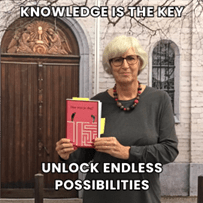“Motivation is what gets you startet. Habit is what keeps you going.” (Jim Ryun)
You undoubtedly have many good and bad habits, and you know how difficult it is to change them. Charles Duhigg argues that we especially need to understand our ‘keystone habits’. These are so crucial that when they change, a whole series of other patterns shift along with them. They are, in a sense, levers on which everything else hangs.
Example of a Keystone Habit
Take, for instance, the habit of making your bed every morning. It may seem like a small action, but it can trigger a chain reaction of productivity and enhanced well-being. It's not directly the making of the bed itself that causes these effects, but it indirectly sets off other positive habits.
Insights from Research
Duhigg emphasizes the importance of keystone habits with research. For example, it has been shown that in families where it is customary to have a family dinner together, children generally perform better at school, manage their emotions better, and have more self-confidence.
Strategische aanpak om gewoontes te veranderen
Instead of focusing on eliminating bad habits, it might be more effective to identify and improve your keystone habits. Because if you change something there, you suddenly have the key to change everything else… if you want to, of course. For instance, if you establish a habit of exercising more, you may find that you also start eating healthier and watching less television. Beware, the reverse can also happen: you have the habit of snacking which might lead you to laze around on the couch instead of exercising. Identifying and tackling such negative keystone habits can be just as important.
Hoe identificeer je sleutelgewoontes?
Start thinking about habits that have a major impact on various aspects of your life. Ask yourself questions like:
- Which habit, if I changed it, would have the greatest impact on other habits?
- Are there recurring actions that distinguish days when I am successful from less successful days?
In Conclusion
Reflect on these insights and think about the keystone habits you would like to develop or change. What other (bad) habits might disappear as a result? Share your insights and stories.
Leestips:
- Duhigg Charles, The Power of Habit, Why We Do What We Do and How to Change it, Random House, 2012.
- Dr. Casteleyn Brenda, Hoe was je dag? 50 Inspirerende wandelingen voor meer diepgang in je relaties, Borgerhoff & Lamberigts, Gent, 2021, blz. 68-69.









